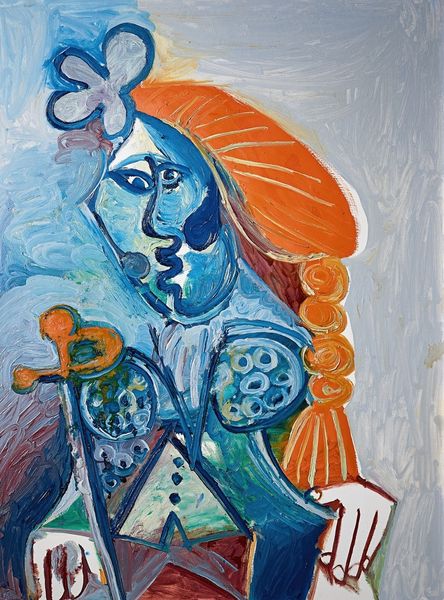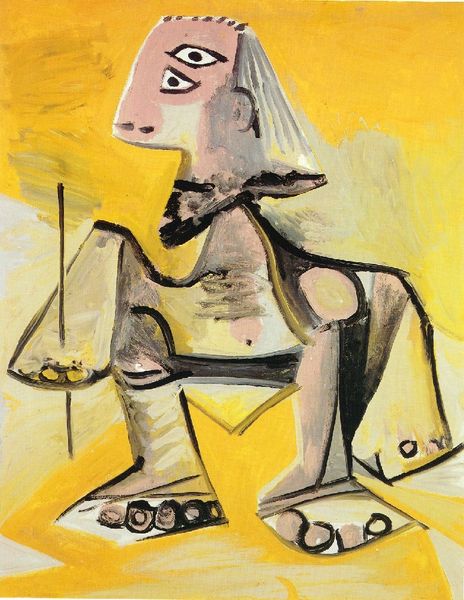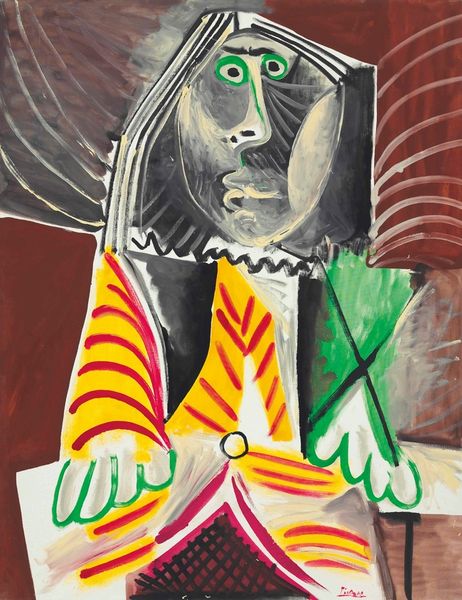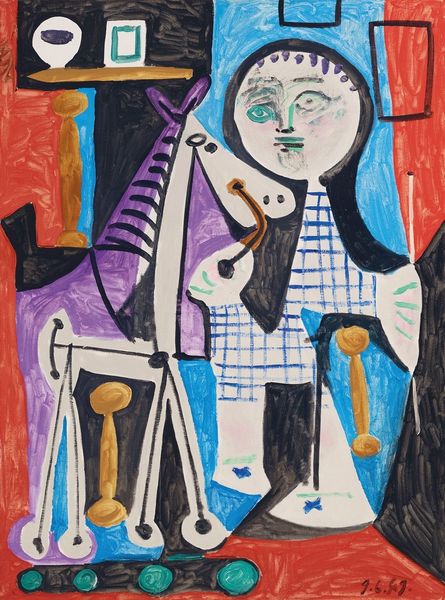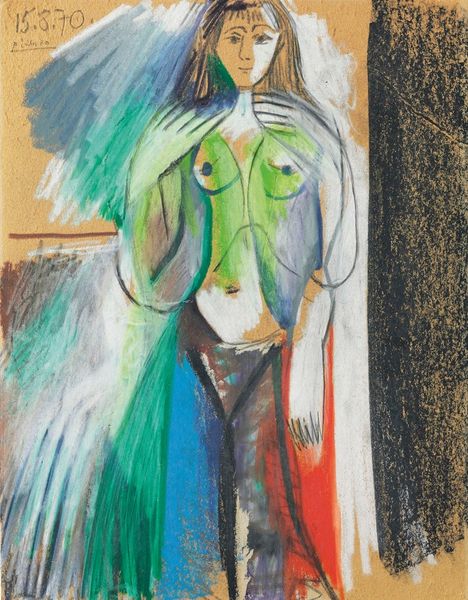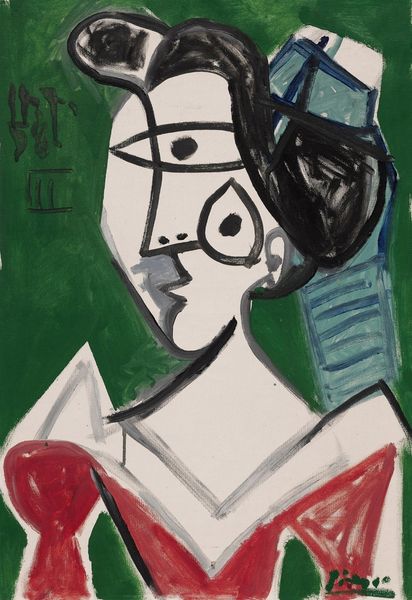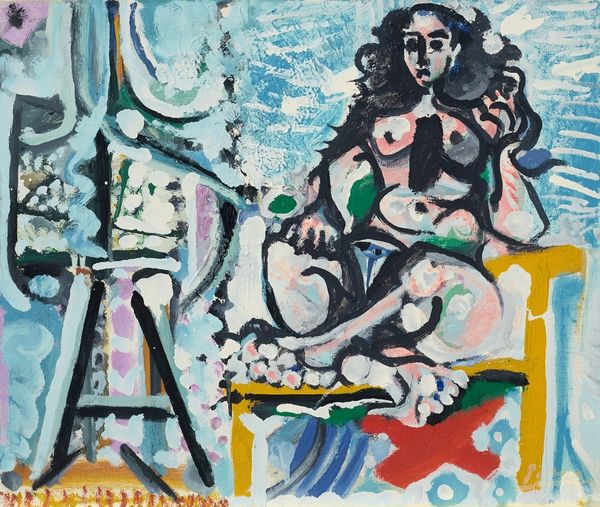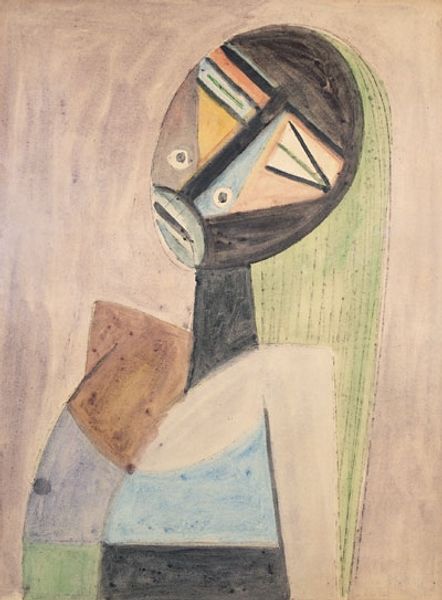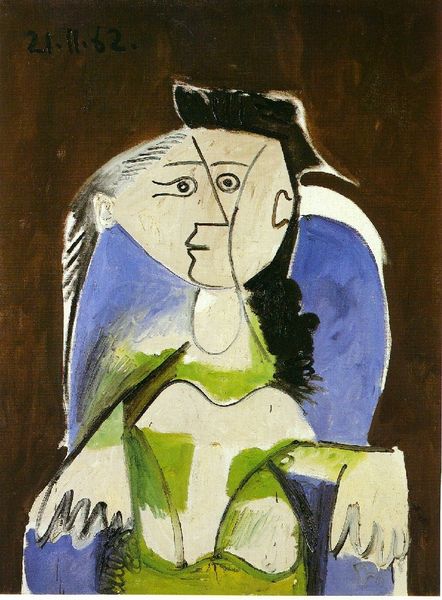
Copyright: Modern Artists: Artvee
Curator: Painted in 1971, this oil on canvas is entitled "At Work" and was executed by Pablo Picasso. It is part of his later figuration style. The palette seems quite raw, but controlled. What strikes you upon seeing it? Editor: My first impression is the thickness of the impasto; the paint is aggressively applied. It seems like the artist worked very physically. The expression is certainly... forceful, shall we say? Curator: Precisely. Note the simplified forms; shapes of planes coalesce to become a head, shoulders and perhaps a figure poised over a worktable? What meanings may arise? Editor: If we consider Picasso's own creative labor, this could very well be an interpretation, a depiction, a kind of meditation on that very topic. Looking at the surface treatment and pigment choices it really pushes toward the material conditions of the work itself. He isn't simply painting the idea of work; he's embodying it through the labour of paint application itself. Curator: I would agree. This composition adheres to Picasso's commitment to dissecting form, reorganizing visual components into simultaneous perspectives of a single, rendered object. This dismantling contributes to the visual rhythm in terms of geometric shapes. Editor: I would even argue we need to look at it beyond mere form: the visible brushstrokes suggest not just speed but a conscious decision to foreground process over perfectly polished product. In that sense, this portrait could represent an ethos as much as it reflects stylistic mannerisms. It captures something raw. Curator: Absolutely, we also must account for the emotive aspects achieved through distortion. In his manipulation of human form and feature, Picasso pushes us to consider perception and how subjective viewing influences interpretation. Editor: It feels as if the viewer becomes a co-conspirator, then, actively invited to participate in completing the puzzle, bringing to the experience one's own values about labor itself. I appreciate seeing an old master addressing, essentially, his mode of "craft." Curator: Well, this analysis reveals that both the artwork and your perspective on it remain potent forces for interpretation!
Comments
No comments
Be the first to comment and join the conversation on the ultimate creative platform.
